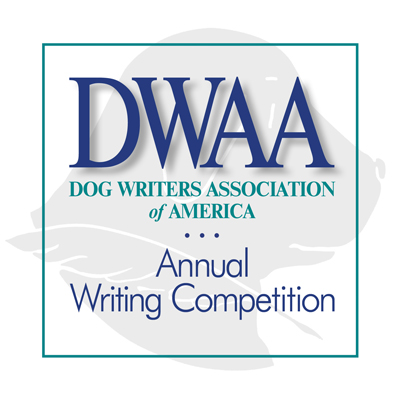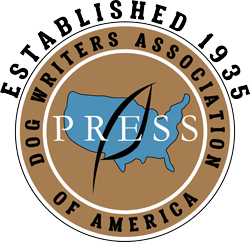Judging Criteria
2025How to Score an Entry
Each judge will be emailed links to the submission page(s) they’ve been assigned to judge. Each page will include a link to the content being judged, and a scoring slider, which can be moved to the score they wish to award. After entering scores for TECHNICAL MERIT and CREATIVE STYLE, be sure to click the "Submit Final Answers" button to finish judging the entry. Note that you must be logged in using your judging credentials for these links to include judges’ scoring capabilities. If you don’t see the slider asking for a score, please log in using the email address where you received the links!
Links have been verified; however, if you encounter any problems please email the contest chair at 2025dwaacontestchair@gmail.com.
The scoring range is 1 to 100, with 1 being the worst possible score and 100 being the best possible score. Judges will be asked to score each entry on two aspects, TECHNICAL MERIT and CREATIVE STYLE. (For Children's Books, categories 42-45, the two aspects are TEXT and ART.) Content must be original and creative. By entering the Contest, the entrant(s) has confirmed ownership of the material submitted.

Things to Consider When Scoring
Please note that Children's Book Categories 35-37 have separate guidelines – See below.Technical Merit
Up to 100 PointsWriting: Does the creator use proper grammar, punctuation, paragraph construction, spelling, word usage and consistency? Is the language clear and presented in a logical fashion? Does the piece flow? Are experts cited, if applicable? Is it well-written? Is there clarity and originality of expression? If fiction, is the story line and presentation of characters well structured? If the item is non-fiction, is it accurate? Is it factual? Are viewpoints interesting and consistent with the overall style? Does the writing represent the purpose of the submission? Is the entry effective in communicating the significance of the topic? Does it provide relevant information?
Digital: Is the website or blogsite well organized and user-friendly? Do you get a clear idea of its intended purpose when you arrive at the blogsite or website? Video should be assessed on the basis of focus, sound quality, visual quality, lighting and length. Audio sound quality should be clear and easy to understand.
Visual: For Art, Photography, and Illustrations, judges should consider composition, lighting and brush technique. For writing, judges should consider whether the material is well organized, tells a story and/or evokes a mood. Is primary subject, of the photo i.e., a dog, in focus? Are the dog’s eyes in focus? Was anti-red eye function utilized? Is the depth of field optimal to enhance the main subject i.e. the dog? Is the composition correct? Was optimal white balance utilized to clarify the color detail of the dog? Is the white balance optimized to identify the details of a primarily white or light colored dog OR to distinguish details of a truly black colored or dark dog. Exposure - Does the photograph capture the dog’s true color? Is it over or under exposed resulting in a less than clear color narrative? Is the photographer’s use of distance to their subject optimal?
Creative Style
Up to 100 PointsWriting: Is the entry engaging? Does the writing style offer a message or tell a story? Does the writing stir an emotion? If the piece is supposed to be humorous, was it? Does the piece offer an original voice, unique style, or fresh point of view? How effectively are dogs represented? Does the writing meet its intended purpose?
For Poetry: Does it follow a known poetic pattern, such as haiku or iambic pentameter? Is the meter and rhyme consistent (if applicable). Does it evoke a mood? Does the work tell a story? Do the form and content of the poem complement one another? Does the poet use language effectively? Does the poem maintain a consistent voice?
Books: Who is the intended audience: the scholar/specialist or the layperson? Does it cover the subject? Is it a good, reliable, authoritative, appropriate source of information? Is it written at a level you can understand and use? Is it age appropriate? Judge a book based on quality of content, originality, design, and production with an emphasis on innovation and social relevance.
All visual entries: Color is an essential design element that should not be underestimated in any project. Is the right part of it in focus? Is it relevant? Did the material make an emotional impact on you when you first saw it? Is Contrast (the range between the lightest and darkest areas of the photo) used effectively?
Audio-Visual media: Does the entry evoke emotion? Is the subject matter appropriately represented? Does it engage you from the onset and not lose emotion? Is the sound used effectively to add to the nature of the material? Does the visual aspect of the piece enhance the nature of the message? Is the content relevant? Does it tell a story? Was it clear and compelling?
Graphics: Looking at the project, ask yourself about the message it conveys. Is the graphic impactful, legible and meaningful? Does the graphic have a “wow” factor? Does it stand out and catch your eye? Does it support defined goals and objectives?
Photography: Does the photo convey emotion? Does the photo/video portray a visual experience or story? Are major points of interest conveyed? Does the use of color evoke emotion? Is the photograph/video memorable?
Scoring Children's Books Categories 35-37
Text
Up to 100 Points- Is the writing style appropriate for intended audience/age in terms of reading level, word choice, sentence or non-traditional text structure, clarity, length, and interpretation?
- Is the text well written with lively and engaging language?
- Does the text use of traditional elements such as plot, setting, and characters is evident and skillful. Does the plot tell a good story?
- Is the material exciting and interesting to children? It may invite them to solve problems, ask questions or investigate issues.
- Can children relate to the experiences in the text?
- Are characters should be positively depicted and stereotypes challenged? The depiction of peoples and cultures beyond children’s existing experience should be represented accurately and positively.
- Does the story move? Is there conflict or suspense? Is the plot fresh and original? Is it plausible and credible? Is there preparation (foreshadowing) for events? Is there a logical series of happenings? Is there a basis of cause and effect in the happenings? Is there an identifiable conclusion/climax? Do the events build to that outcome/ending?
- Does the formatting (page layout, print size) reflect the targeted audience?
- Is the narrative true to selected genre such as fantasy, short story and “coming of age?”
Art
Up to 100 PointsCover:
- Is the cover eye catching?
- Does the cover/interior art clearly indicate topic/theme of book?
- Is the artwork appropriate for the targeted audience?
- Are the illustrations supportive? Photographs may offer rich and authentic images, while drawings, charts, maps and diagrams can support learner understanding.
Interior:
- Are art and text interdependent and aesthetically pleasing?
- Is the art appropriate and relevant to graphic format and content?
- Is the use of a variety and appropriate symbolic art, such as text bubbles and graphical representations of sound effects and emotions?
- Is the art adequate in size and legibility?
- Is there effective use of color and shading?

